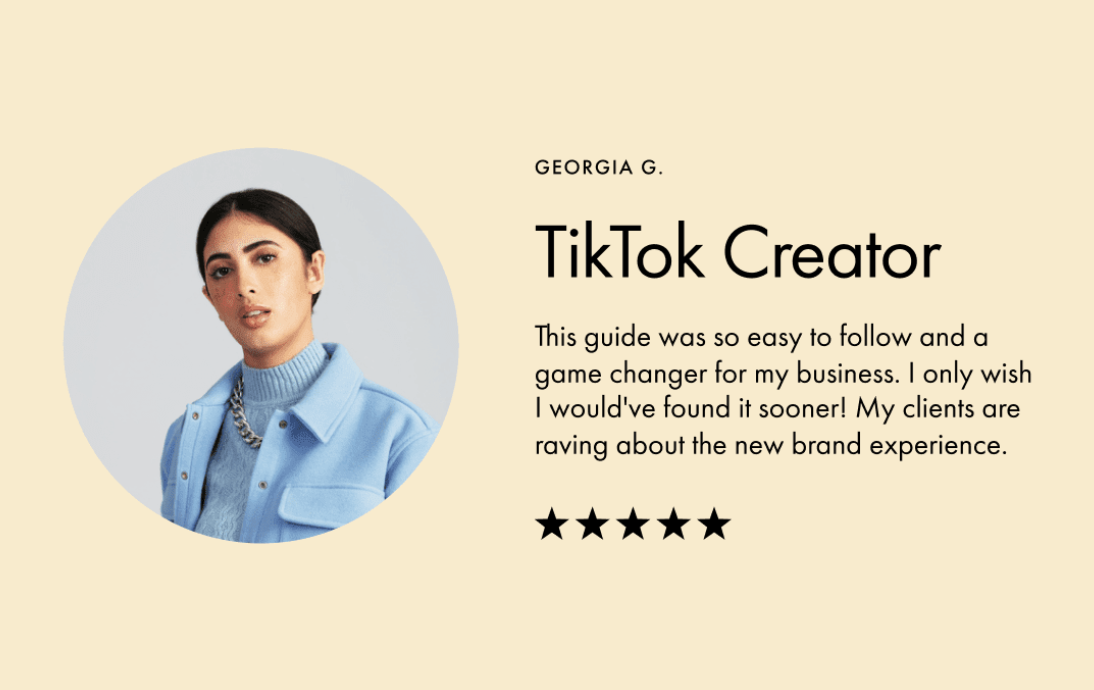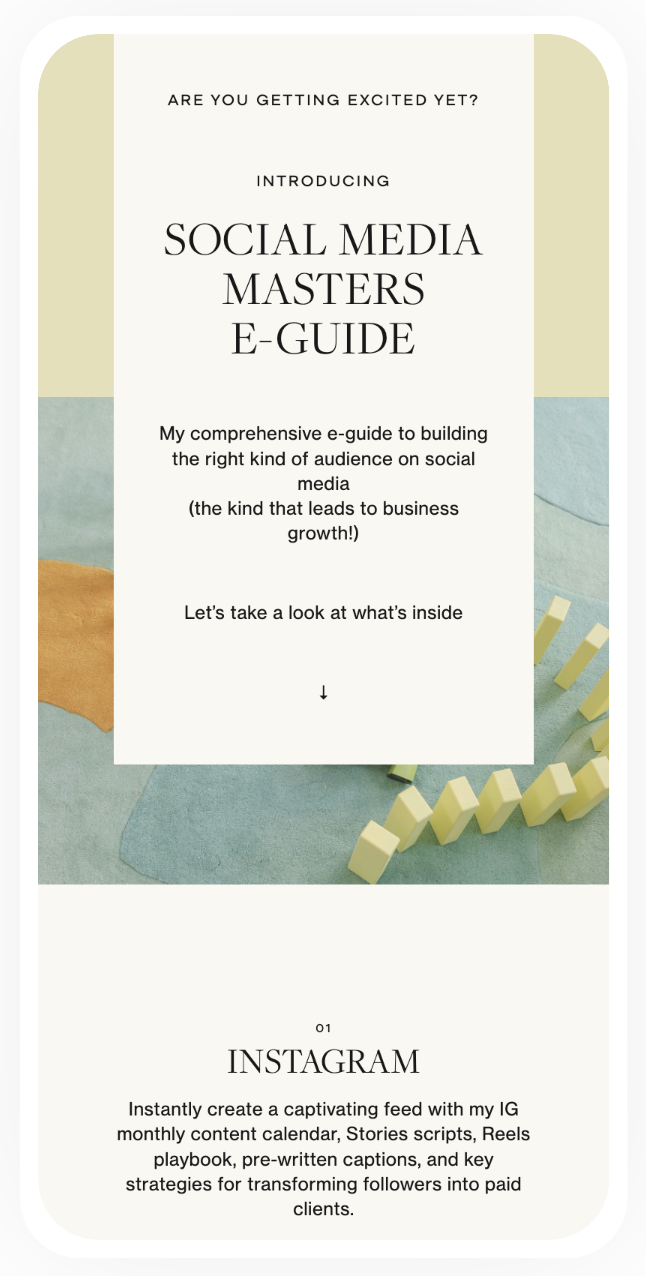16 Checkout page optimization tips to increase conversions
Table of Contents Jump to:
Jump to:
Table of contents
TLDR: Want a higher conversion rate (and even more sales)? Optimize your checkout page! We’re showing you how.
Checkout page optimization can be the difference between a five and six-figure business, so it’s crucial you create a smooth user-friendly checkout flow as you build your online store. But how do you know if your checkout page is fully optimized? One big clue is if you’ve noticed an unusually high shopping cart abandonment rate on your website. If so, your checkout page could be the culprit.
Cart abandonment describes when website visitors start your checkout process online but leave the website before completing their purchase. According to the Baymard Institute, the average cart abandonment rate online is a whopping 70%. That means for every 100 shoppers who add an item to their cart, only 30 will finish the checkout process.
Fortunately, optimizing your website’s checkout page is a simple way to lower your cart abandonment rate and increase sales. Let’s discuss what “checkout page optimization” actually means before we dive into a few checkout optimization tips.
Build high-converting checkout pages with Flodesk Checkout
Create a beautiful, fully optimized checkout flow that seamlessly transforms visitors into paying customers.
What is checkout page optimization?
Checkout page optimization is the process of tweaking and refining the design and user experience of your online store’s checkout flow. Simply put, making your checkout flow seamless and easy to navigate.
The goal is to make the purchase process straightforward and hassle-free, with the ultimate goal of increasing conversion rates and revenue for your business. If you’ve shopped online, you’ve undoubtedly noticed checkout process optimization in action, even if you didn’t think of it in those terms.
For example, online stores that allow for guest checkout instead of making all customers register for an account have decided to sacrifice a little bit of customer data to streamline their process and optimize their conversion rates. You should consider this and many other trade-offs as you optimize your online store. Remember, your customers (and their experience) should guide your decisions.
Why is optimized checkout important?
So, why should e-commerce stores make it a priority to optimize checkout? Every additional customer who completes a purchase benefits your business’s bottom line. If you’re familiar with the concept of the sales funnel, then you know that the final stage—conversion—is the most difficult stage to get customers through. Checkout page optimization is one of the best tools in your arsenal to improve your conversion rate and total sales.
Optimizing your checkout process to capture more customers and improve your cart abandonment rate can add up over time. With that in mind, every decision you make about the checkout process is an opportunity to encourage customers across the finish line to a purchase. Focus the entire checkout process on giving your potential customers a frictionless experience. This will pay huge dividends in the long run.
Now that you understand what checkout optimization is and why your e-commerce store needs to prioritize it, let’s take a look at 16 checkout optimization tips that will help you thrive.
16 Checkout optimization tips
Creating fully optimized checkout pages on your e-commerce platform can be easy, regardless of what products you sell, how skilled you are with web design, or your marketing budget. Keep these 16 checkout optimization tips in mind and use intuitive, cost-effective Thrivecart alternatives like Flodesk Checkout to maximize your sales.
- Create urgency to checkout
- Make your CTA button stand out
- Eliminate pop-ups and distractions
- Offer single-page checkout when possible
- Display checkout progress
- Provide multiple payment options
- Offer one-click payment
- Enable autocomplete
- Highlight positive product reviews
- Create a mobile-friendly design
- Establish shipping fees and dates before checkout
- Offer free shipping
- Enable instant delivery of digital products
- Allow guest checkout
- Streamline account signup
- Display security badges
Build high-converting checkout pages with Flodesk Checkout
Create a beautiful, fully optimized checkout flow that seamlessly transforms visitors into paying customers.
1. Create urgency to checkout
Encourage visitors to complete their purchases and discourage cart abandonment by generating a sense of urgency. Give your website visitors a reason that making a purchase right now is better for them than waiting.
To create urgency, highlight a limited-time discount code like 15% off. You can also emphasize scarcity with limited stock or courses with limited availability using callouts like, “only a few left” or “spots are filling up fast!” Creating a sense of scarcity encourages customers to check out before they miss out. Remember to use these techniques sparingly, as overdoing it can come across as pushy or desperate.
Optimizing your e-commerce checkout process ensures your website visitors know where to go when they’re ready to make a purchase. It should be immediately evident to your shoppers what they need to click to move forward.
Making your CTA button a contrasting color is one way to set it apart from the rest of your webpage. You can also distinguish your CTAs with unique font formatting, shapes, and other visual indicators. Finally, your CTA buttons should be above the fold, appearing (at least) at the top of the page without users having to scroll down.
3. Eliminate pop-ups and distractions
As a rule of thumb, keeping your customers on the simplest, shortest path to completing a purchase is best. While pop-ups and other web complications can seem like a great way to collect information, keep in mind that distractions like these can make the checkout experience feel cluttered and create additional friction. Especially on mobile devices.
Every additional touchpoint can slow users down and lead to abandoned carts. Consider whether a pop-up will be worth the trade-off. And prioritize a clean product page design.
4. Offer single-page checkout when possible
In line with the previous tip, simplifying and minimizing your checkout flow to one page is an excellent way to improve your e-commerce site’s checkout process. Most online shoppers are looking for instant gratification. Having an overly complicated checkout process that feels like checking in at the doctor’s office can take away from the convenience of online shopping (and ultimately lead to abandoned carts).
According to Statista, 17% of shopping cart abandonment is due to a long and complicated checkout process. Optimize your checkout flow by considering which form fields are strictly necessary and look to condense them into a one-page checkout process whenever possible.
5. Display checkout progress
Sometimes you can’t reduce your e-commerce checkout process to a single page. But you can set customer expectations for the length of the purchase process. If you require a multi-step checkout process, use a progress bar or a page counter on your checkout page that lets users know which checkout stage they’re in and how many more steps they need to take.
For example, it’s much more motivating to fill out page two of the checkout form when you know there are only three pages total. In this case, a progress bar serves as an essential piece of communication that can help prevent cart abandonment.
6. Provide multiple payment options
Offering multiple payment options is an easy way to reduce friction in your checkout process. Statista found that 9% of cart abandonment is due to a need for multiple payment methods.
Tools like Flodesk Checkout make it hassle-free on your end to accept every major credit card and provide flexibility to your customers. And the best part is Flodesk Checkout will never charge you a platform fee for your sales. That means you can offer each of your shoppers their preferred payment method while keeping your hard-earned money.
7. Offer one-click payment
In addition to accepting a variety of payment options, another potential avenue for checkout optimization is accepting one-click payments. One-click payments let shoppers enter their payment details and shipping address once and then save that information for future purchases, so they can press one button to complete a new order.
When it comes to building the optimal checkout process, less is more. The fewer steps it takes to input payment information, the more likely customers are to complete a purchase. One-click checkout can be a powerful tool for e-commerce sites that encourages repeat purchases.
8. Enable autocomplete
Similar to one-click payment, enabling autocomplete can help decrease cart abandonment by making the purchase process quick and easy for shoppers. Have you ever started typing your billing address into a checkout form and had the city, state, and ZIP code filled in automatically? That’s autocomplete!
Shoppers who use digital wallets like Apple Pay or Google Pay can also use autocomplete to fill in their payment information with minimal effort. Offering this convenience is one of the easiest wins for checkout optimization.
9. Highlight positive reviews of your product
Another way you can improve purchase page performance is by giving your users some final words of encouragement to check out by highlighting positive reviews. We’ve previously discussed how powerful digital product reviews can be to get unaware customers interested in your product.
Reviews can also help optimize checkout pages. If a user has your ebook in their cart but isn’t quite ready to buy, providing social proof by displaying a glowing review from a past customer can be a difference maker that drives that last click.
10. Create a mobile-friendly design
Mobile commerce, or online shopping via smartphones, is growing into one of the largest shares of the digital economy—and with no signs of slowing down. The convenience of buying a roll of paper towels or a box of cookies on your phone the moment you realize you need them is unmatched.
However, a report from Kibo found that mobile users have the highest cart abandonment rates—84% in the US—of any device type compared to desktop and tablet users (72% and 75% respectively). That’s why e-commerce websites need to create a mobile-compatible checkout page. Tools like Flodesk Checkout make mobile compatibility easy by offering an incredible library of beautiful, easy-to-use templates that have been optimized for mobile checkout.
11. Establish shipping fees and dates before checkout
Have you ever started buying a product online and then gotten frustrated because of unexpectedly high shipping costs? You’re not alone. Research shows that hidden costs are the number one cause of shopping cart abandonment at 48%, doubling the second leading cause (more on that to come in tip 14).
One way to avoid disappointing customers when they get to the final checkout page is by establishing the cost and timeline for shipping earlier in the process. For example, displaying a simple “ships in 4-5 business days” or a list of different shipping options on the product detail page can help ensure customers never feel misled.
12. Offer free shipping
Even better than explaining your shipping costs is offering free shipping. Free shipping is highly valuable to many shoppers and can often be a deciding factor in their purchase decisions online.
Forbes found that 84% of shoppers have specifically made a purchase because the shipping was free. If offering free or expedited shipping is feasible for your e-commerce site, add CTAs that emphasize that convenience to your customers on your checkout page.
13. Enable instant delivery of digital products
For entrepreneurs who sell digital products, leveraging instant delivery should be a central building block of your e-commerce checkout page. First on our list of checkout page best practices was creating a sense of urgency to complete a checkout. In line with that, create your digital product checkout page to emphasize the convenience, instant delivery, and quick need fulfillment offered by your product.
Take selling a self-help ebook as an example. A callout on your checkout page, such as “purchase this guide now to receive these life-changing tips in your inbox immediately,” will help increase conversions and discourage cart abandonment.
14. Allow guest checkout
As mentioned in tip 11, hidden shipping costs are far and away the top reason for cart abandonment. But you might be surprised to learn that the second most popular reason for customers abandoning their carts is that a website wouldn’t allow guest checkout.
While many business owners are understandably looking for as much customer data as possible to build ongoing marketing relationships with potential customers, many visitors still value the convenience of a guest checkout option. Being a guest can make the checkout process faster and comes without the commitment of receiving further communications from a new company. It allows customers to finish the checkout process without creating an account and can be a good way of optimizing your website’s conversion rate.
15. Streamline account signup
Account creation can still be a valuable tool, especially if you offer your customers enticing freebies and helpful newsletters using tools like Flodesk Email. If you encourage shoppers to create an account with your website, only require essential form fields. Extending the checkout process any longer than necessary risks alienating some of your traffic and increasing cart abandonment.
Think about your own shopping experience. If a form only requires a name and an email address, you’re much more likely to provide that information than if a site requires a long survey to sign up for an account. Your customers, for the most part, operate as you do. So exercise some restraint in the account signup phase of the checkout process.
16. Display security badges
Security and privacy are among users’ top priorities during e-commerce checkout. Roughly 17% of abandoned carts result from customers deciding a website needs to be more trustworthy. No one wants to input their payment details into a site that looks like it could be a scam.
You can ease their minds by displaying security badges on your checkout pages and confirming your data validation practices. Doing this will increase your conversions and drive sales. Among the most beneficial security features you can tout on your e-commerce website are:
- Payment badges
- Antivirus software logos
- SSL certificates
- Money-back guarantees
- Reviews and testimonials
- Privacy policies
Read next: Our favorite checkout page design examples!
Prioritize exceptional checkout experiences with Flodesk
Having the right mindset to optimize your checkout process is vital to increasing your e-commerce sales, and having the right tools at your disposal is equally important. Flodesk Checkout is intuitive and makes it fun to create stunning checkout experiences that your customers will love—all without the hassle of coding. Simply click and drag using the simple editor to adjust one of our beautiful templates to fit your brand and product. You can even get started without a website!
Build high-converting checkout pages with Flodesk Checkout
Create a beautiful, fully optimized checkout flow that seamlessly transforms visitors into paying customers.








